
How the World Cup Format impacts Results
Taking a look at all matches from previous world cupsAs the world cup just got started, I thought it’s a good time to look back at all the previous editions of this tournament and answer some of my questions about the affects of the format on the results.
The unique part of the world cup is that it’s a knockout tournament where the players play a mini match consisting of 2 classical games and a tiebreak if needed.
Game and match results
The first thing I wanted to look into was how the results of the individual games and matches differ.
As there is a big rating gap in the first rounds, I grouped the games and matches based on the Elo difference of the two players. The next two plots are both from the perspective of the higher rated player.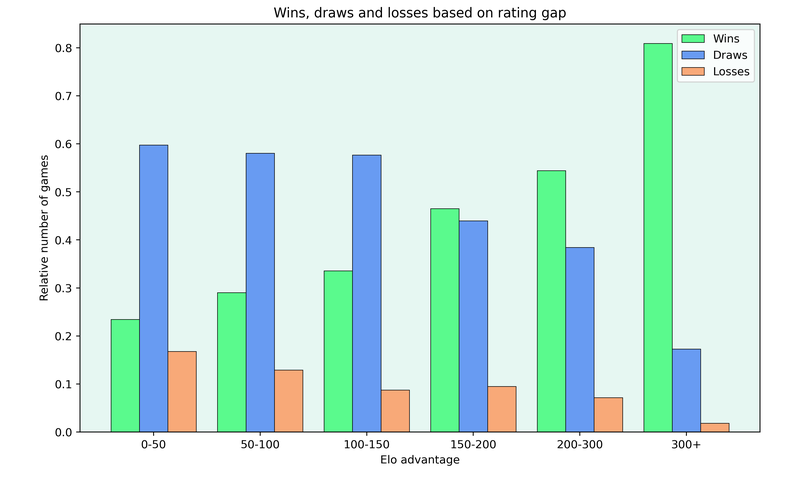
The individual game results are as one would expect, the higher rated player scores better, but there remains a significant drawing rate, even in matches with a rating gap of more than 300 rating points.
The picture shifts slightly when looking at the mini matches. I decided to look at the classical part and tiebreaks separately.
(This plot and the following paragraph were updated on the 12th of November as I found a bug in my code)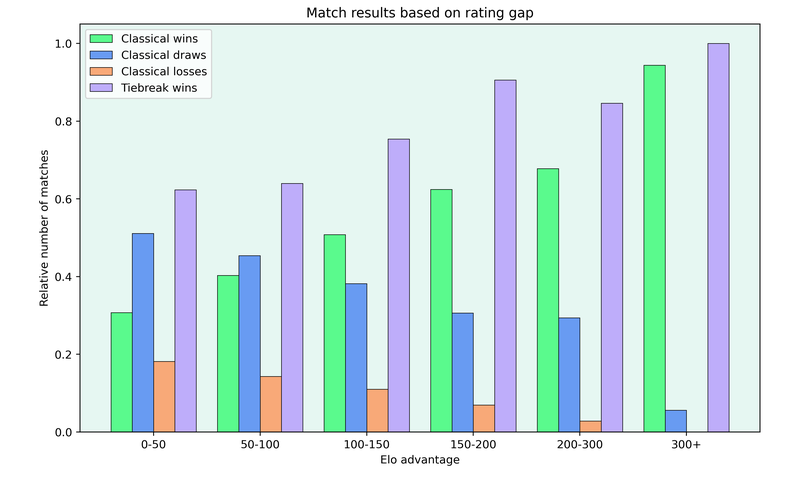
Having the additional game really helps the higher rated players to win the match.
It's interesting to see that the higher rated players have a big advantage in the tiebreaks. I guess that part of the reason is that as the drawing margin reduces, the favourites gain more outright winning chances. Another part of the explanation could be that the difference in playing levels becomes more pronounced in the
I also took a look at all matches where a player rated at least 100 points below their opponent won. Around 45.5% of these upsets are won in the tiebreaks and only 19% of the upset matches are won by drawing the first classical game and winning the second one. The remaining 35.5% are matches where the underdog won the first game and won or drew the second game.
Must win games
Another interesting dynamic of these 2 game matches is that one player often finds themselves in a must win situation after having lost the first game.
Once again, I divided the games based on the rating difference of the players. A negative difference means that the lower rated player is in a must win situation, whereas a positive difference means that the higher rated player has to win.
I also looked at white and black games separately.
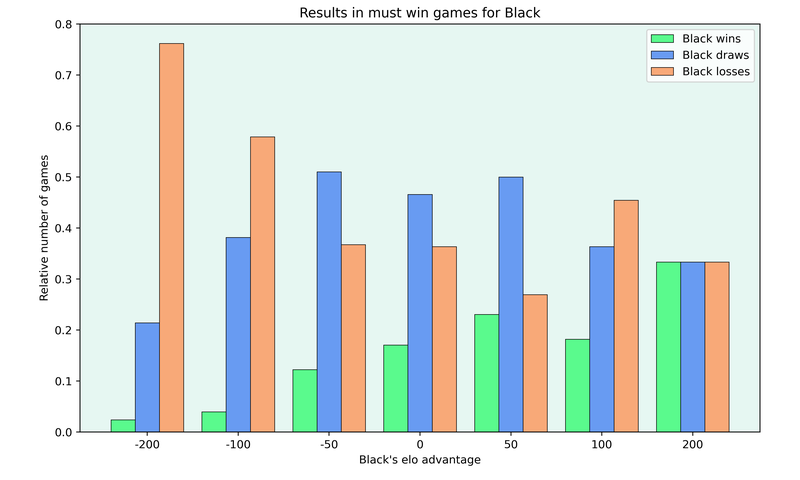
Interestingly, players lose more games than they win when they are in a must win situation, even if they are the rating favourite.
It looks like having to take risks usually doesn’t work out too well, but another part of the explanation may be that the players in must win situations are in worse shape, as they already lost the first game. Overall, players only win around 18% of their must win games.
Impact of tiebreaks
I also wanted to see if playing tiebreaks impacts the first game of the next match. Players who have to play a tiebreak lose one rest day compared to players who won their match in the classical portion.
So I thought a player who won their previous match in the classical portion has an advantage in the first classical game in a match against a player who had to play a tiebreak the day before.
However, players how played a tiebreak scored around 46.5% in both the first and second classical game against players who didn’t have a tiebreak in the previous round. The fact that the score is below 50% can probably be explained by the fact that on average, the players who had to play a tiebreak were around 25 Elo lower rated than their opponents.
I’ll write a recap post after the current World Cup has concluded, so if there are any other questions you are interested in, let me know.
If you've enjoyed this post, check out my Substack.
You may also like
 jk_182
jk_182Do Attacking Players play more Forcing Moves?
Finding forcing moves and looking through the games of world champions CM HGabor
CM HGaborHow titled players lie to you
This post is a word of warning for the average club player. As the chess world is becoming increasin…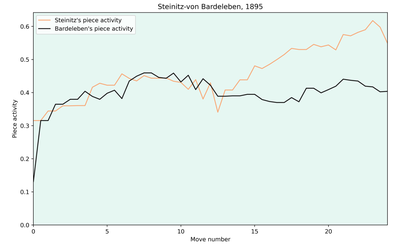 jk_182
jk_182Quantifying Piece Activity
A second attempt to calculate the activity of a chess position jk_182
jk_182How well does Carlsen score in equal Endgames?
Looking at the data to see if Carlsen really squeezes out more wins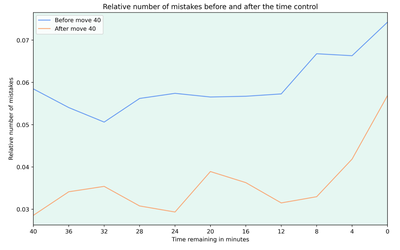 jk_182
jk_182How does the Clock impact the Rate of Mistakes?
Looking at the relative number of mistakes depending on the time left on the clock thibault
thibault